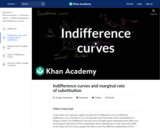
We can graph how we value tradeoffs between two goods. Created by Sal Khan.
- Subject:
- Economics
- Social Science
- Material Type:
- Lesson
- Provider:
- Khan Academy
- Provider Set:
- Khan Academy
- Author:
- Sal Khan
- Date Added:
- 07/27/2021

We can graph how we value tradeoffs between two goods. Created by Sal Khan.

The concepts of normal goods and inferior goods can be tricky, and the definitions can be somewhat subjective as well. In this video, we take a deeper look at these kinds of goods. Created by Sal Khan.
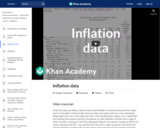
Looking at actual sequential and year-over-year inflation data. Created by Sal Khan.
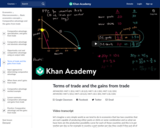
In this video, we take a slightly different approach to determining comparative advantage because we are given data in a slightly different way. Rather than knowing how much of two goods can be produced in a day, we know how much of a resources (in this case labor) is needed to produce one unit of a good.
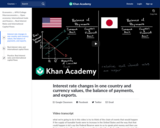
Changes in interest rates in one country impact economic conditions in other countries. In this video, walk through a chain of events that starts with a change in interest rates in the United States that affects the relative value of the dollar, the Japanese Yen, and exports.

At age twenty-seven, physicist Philip Morrison joined the Manhattan Project, the code name given to the U.S. government's covert effort at Los Alamos to develop the first nuclear weapon. The Manhattan Project was also the most expensive single program ever financed by public funds. In this video segment, Morrison describes the charismatic leadership of his mentor, J. Robert Oppenheimer, and the urgency of their mission to manufacture a weapon 'which if we didn't make first would lead to the loss of the war." In the interview Morrison conducted for War and Peace in the Nuclear Age: 'Dawn,' he describes the remote, inaccessible setting of the laboratory that operated in extreme secrecy. It was this physical isolation, he maintains, that allowed scientists extraordinary freedom to exchange ideas with fellow physicists. Morrison also reflects on his wartime fears. Germany had many of the greatest minds in physics and engineering, which created tremendous anxiety among Allied scientists that it would win the atomic race and the war, and Morrison recalls the elaborate schemes he devised to determine that country's atomic progress. At the time that he was helping assemble the world's first atomic bomb, Morrison believed that nuclear weapons 'could be made part of the construction of the peace.' A month after the war, he toured Hiroshima, and for several years thereafter he testified, became a public spokesman, and lobbied for international nuclear cooperation. After leaving Los Alamos, Morrison returned to academia. For the rest of his life he was a forceful voice against nuclear weapons.
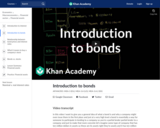
In this video, we think how bonds work. Topics include what it means to buy a bond, what it means to issue a bond, coupon rates, par value, and maturity. Created by Sal Khan.
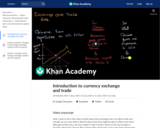
Learn how interest rates, exchange rates, and international trade are intertwined in this video.
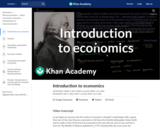
In this video, we introduce the field of economics using quotes from the person that many consider to be the "father" of economics: Adam Smith. Topics include the definition of economics, microeconomics, and macroeconomics as a field and the role of assumptions in economic decisionmaking. Created by Sal Khan.
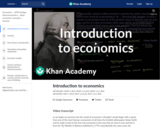
Basic introduction to what microeconomics and macroeconomics study. A bit on Adam Smith. This video will enforce standard EPF. 1
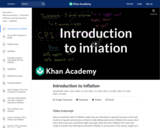
Inflation is an increase in the price level over time. In this video we explore inflation and how it is calculated using a measure called the consumer price index (CPI). Created by Sal Khan.
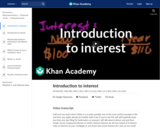
Interest is effectively a rent on money. In this video, we think about what an interest rate really is. Learn about the difference between simple interest and compound interest and how interest is calculated on a loan using an example of calculating the interest rate on a loan. Created by Sal Khan.
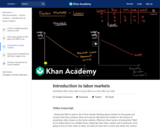
Just like goods and services, the factors of production are exchanged in markets. This video focuses on such market -- the market for labor. The supply of labor is based on people's willingness to tradeoff labor for leisure. The demand for labor is based on labor's marginal revenue product.
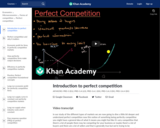
Perfect competition is a theoretical market structure in which there are many buyers and sellers, identical products (also called homogeneous products), perfect information, and no barriers to entry.
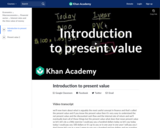
Present value is the value right now of some amount of money in the future. For example, if you are promised $110 in one year, the present value is the current value of that $110 today. Present value is one of the foundational concepts in finance, and we explore the concept and calculation of present value in this video. Created by Sal Khan.
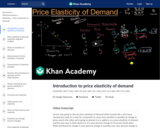
Economists use the concept of price elasticity of demand to describe how the quantity demanded changes in response to a price change. In this video, explore a simple way to calculate the price elasticity of demand, how to interpret that calculation, and how price elasticity of demand varies along a demand curve.
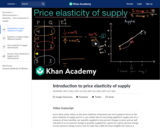
We can calculate the price elasticity of supply to gauge how sensitive percent changes in quantity supplied are to percent changes in price.
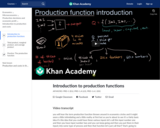
Production functions describe how output is determined by various inputs. The short run is defined as the period of time in which at least one input is fixed. Anything longer than that is considered the long run.
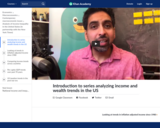
Introduction to series analyzing income and wealth trends in the US. Created by Sal Khan.
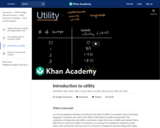
In this video, the economic concepts of utility and marginal utility are introduced.